

DESCRIÇÃO
Inclui apêndices extensos sobre sistemas e filtros e a Transformada de Z.
É dada ênfase em ideias e intuição ao invés de cálculos pesados.
Apresenta detalhadamente diferentes tipos de wavelets: Wavelets Ortogonais, Wavelets Biortogonais, Design de Wavelet e Construção de Wavelets.
CONTEÚDO
1 Introduction
1.1 Computational Mathematics
1.2 Ralation Between tha Abstraction Levels
1.3 Functions and Computational Mathematics
1.4 What is the Relation with Graphics?
1.5 Where do Wavelets Fit?
1.6 About these Book
1.7 Comments and References
2 Funtion Representation and Reconstruction
2.1 Representing Functions
2.2 Basis Representation
2.3 Representation by Frames
2.4 Riesz Basis Representation
2.5 Representation by Projection
2.6 Galerkin Representation
2.7 Reconstruction, Point Sampling and Interpolation
2.8 Multiresolution Representation
2.9 Representation by Dictionaries
2.10 Redundancy in the Representation
2.11 Wavelets and Function Representation
2.12 Comments and References
3 The Fourier Transform
3.1 Analyzing Functions
3.2 A Pause to Think
3.3 Frequency Analysis
3.4 Fourier Transform and Filtering
3.5 Fourier Transform and Function Representation
3.6 Point Sampling and Representation by Projection
3.7 Point Sampling and Representation Coefficients
3.8 Comments and References
5 The Wavelet Transform
5.1 The Wavelet Transform
5.2 Filtering and the Wavelet Transform
5.3 The Discrete Wavelet Transform
5.4 Comments and References
6 Multiresolution Representation
6.1 The Concept of Scale
6.2 Scale Spaces
6.3 A Pause to Think
6.4 Multiresolution Representation and Wavelets
6.5 A Pause… to See the Wavescape
6.6 Two-Scale Relation
6.7 Comments and References
7 The Fast Wavelet Transform
7.1 Multiresolution Representation and Recursion
7.2 Two-Scale Relations and Inner Products
7.3 Wavelet Decomposition and Reconstruction
7.4 The Fast Wavelet Transform Algorithm
7.5 Boundary Conditions
7.6 Comments and References
8 Filter Banks and Multiresolution
8.1 Two-Channel Filter Banks
8.2 Filter Banks and Multiresolution Representation
8.3 Discrete Multiresolution Analysis
8.4 Reconstruction Bank
8.5 Computational Complexity
8.6 Comments and References
9 Constructing Wavelets
9.1 Wavelets in the Frequency Domain
9.2 Orthonormalization Method
9.3 A Recipe
9.4 Piecewise Linear Multiresolution
9.5 Shannon Multiresolution Analysis
9.6 Where to Go Now?
9.7 Comments and References
10 Wavelet Design
10.1 Synthesizing Wavelets from Filters
10.2 Properties of Wavelets
10.3 Classes of Wavelets
10.4 Comments and Refrences
11 Orthogonal Wavelets
11.1 The Polynomial P
11.2 Examples of Orthogonal Wavelets
11.3 Comments and References
12 Biothogonal Wavelets
12.1 Biorthogonal Multiresolution Analysis and Filters
12.2 Filter Desing framework for Biorthogonal Wavelets
12.3 Symmetric Biorthogonal Wavelets
12.4 Comments and References
13 Directions and Guidelines
13.1 history and Motivation
13.2 A Look Back
13.3 Extending the Basic Wavelet Framework
13.4 Applications of Wavelets
13.5 Comments and References
A Systems and Filters
A.1 Systems and Filters
A.2 Discretization of Systems
A.3 Upsampling and Downsampling Operatiors
A.4 Filter Banks
A.5 Comments and References
B The Z Transform
B.1 The Z Transform
B.2 Subsampling Operations
B.3 Comments and References
References
SOBRE OS AUTORES
Luiz Velho
É pesquisador do IMPA. Cursou bacharelado na ESDI – Universidade do Estado do Rio de Janeiro, mestrado no MIT – Media Laboratory e doutorado em Ciência da Computação na Universidade de Toronto. Foi professor visitante do Courant Institute of Mathematical Sciences e pesquisador do NationalFilm Board do Canadá. Trabalhou na Fantastic Animation Machine, em Nova York e na Globo Computação Gráfica, onde desenvolveu sistemas gráficos. Seus interesses incluem fundamentos da computação gráfica, modelagem geométrica, visualização e animação.
Jonas Gomes
Graduou-se em Matemática pela Universidade Federal da Paraíba e fez mestrado e doutorado no IMPA, onde é pesquisador desde 1989. No IMPA, criou o Projeto Visgraf, que desenvolve atividades de ensino, pesquisa e desenvolvimento na área de computação gráfica. Antewriormente, trabalhou na Globo Computação Gráfica. Seus interesses em pesquisa incluem fundamentos matemáticos da computação gráfica, modelagem, visualização e animação e multimídia. Nas horas vagas, seus hobbies prediletos são escrever artigos de divulgação científica e jogar tênis.
COMPRE ON-LINE